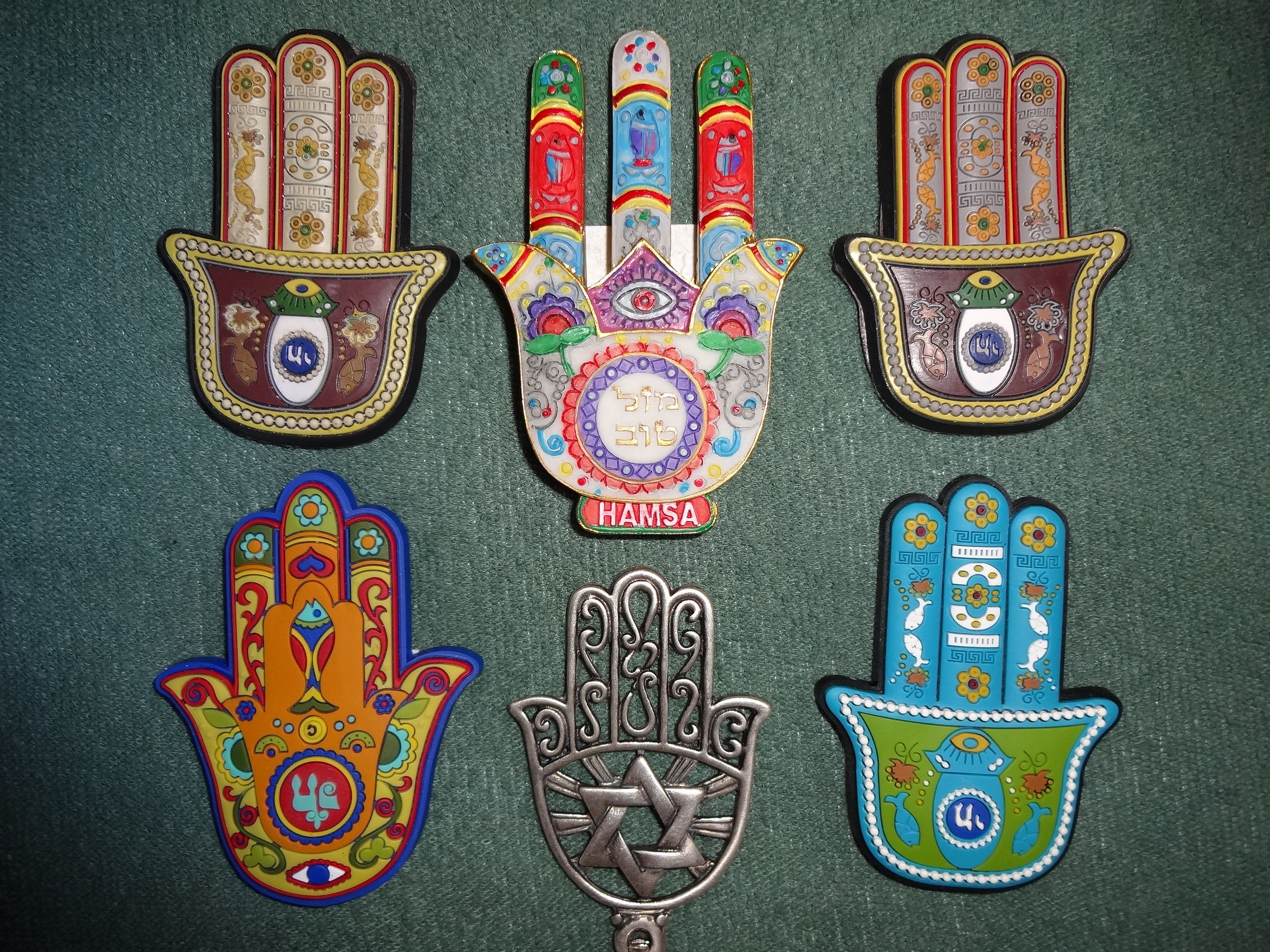
Khamsa talismans (Photo by Bluewind - Own work, CC BY-SA 3.0)
People in some parts of Latin America are prone to an unusual illness called susto. It’s triggered by a traumatic incident, such as a fall or a big scare. Victims believe that the experience causes their souls to detach from their bodies, resulting in physical and psychological distress. Those afflicted become listless, have trouble sleeping and eating, develop fevers and diarrhea, etc. In extreme cases, they may even die. The condition is serious enough to merit inclusion in the DSM.
Susto is an example of a culture-bound syndrome. Even though we all share the same biology, most of us can’t get it; it only afflicts people from particular cultures. There seems to be something about these people’s understanding of themselves and their relationship to the universe that leads them to react to trauma in a particular way. This understanding is what we call a mental model. The model of people prone to susto includes the body-soul dichotomy, for example. This dichotomy seems central to the condition.
You and I also have models of how reality works. For example, we believe the earth orbits the sun. We think of politics as ranging from left to right. We distinguish people by various characteristics, such as race, age, gender, education, cultural background, religious affiliation, nationality, etc. We exchange resources and services by using currency, which is increasingly intangible. We take all of this stuff for granted.
But these models aren’t stable. While some of these distinctions are very old, new ones occasionally appear due to social and technological innovations. For example, digital/analog is a distinction that shapes much of today’s world and which wouldn’t make sense to a person from the 15th Century. And it’s not just that new distinctions emerge: old ones also evolve. For a long time, our understanding of what constitutes a person’s gender was limited to two choices. That distinction is becoming more nuanced.
Evolving mental models cause turbulence. Change can be scary, especially when it upends foundational aspects of one’s worldview. What feels like the new normal to one person may feel threatening to another. To paraphrase William Gibson, the new models are already here, they’re just not evenly distributed. I believe such misalignments in our understandings of reality are at the core of many of our maladies today.
People suffering from susto can be treated by visiting a curandero, or folk healer — i.e., a person with in-depth knowledge of the mental models that lead someone to “catch” the condition. The healer works with the patient to enact particular rituals that help them re-integrate. In his recent call to emancipate information architecture, Peter Morville challenges information architects to think of ourselves in a similar role: helping change mental models through the mindful reframing of semantic distinctions.
As I’ve written before, establishing meaningful distinctions is central to the work of information architecture. We create distinctions by structuring language. The work calls for mastering semantic structures in service of influencing mental models. Heady stuff! And ethically laden. Yet so necessary in today’s world — and not just for making digital things.
This new understanding of the role requires that we think of our work as not merely about creating navigation structures or labeling systems but also (and perhaps primarily) about defining and clarifying the frameworks that help people deal skillfully with various aspects of reality. True, every day we mediate more of our interactions through digital systems, which require thoughtful navigation and labeling. But our interactions also happen elsewhere. It’s a call for a much broader — and deeper — remit for IA.
A version of this post first appeared in my newsletter. Subscribe to receive posts like this in your inbox every other Sunday.